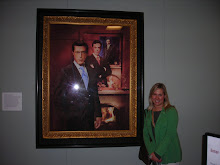To be or not to be… is that the question? Or rather, in the world of distribution, is the question to copyright or not to copyright? Hmmm
Well, on one hand, copyright is a beautiful thing. Musicians, authors, painters, scholars, and creative thinkers of all kinds can protect the sanctity of their work with a copyright. People in the public domain won’t be able to use or alter an original work without permission from the creator. No one would be able to wrongly take credit for their genius, nor would they be able to tweak the work so that its integrity is compromised (lest we forget “Under Pressure” vs. Ice Ice Baby”) Violations of copyright have legal consequences, preventing plagiarism or downright stealing.
On the other hand, though, the world of copyright is a tad strict. Rigid even, to the point where simple sharing of creative works is direct violation of copyright, even when the original creator is attributed and the work isn’t altered. While this may protect the integrity of the property, it could also prevent the promotion of the creator. In other words, if a piece of intellectual property is under lock and key under penalty of law for, roughly, 100 years (approximately the creators lifetime), and members of the public domain (aka the rest of us) have to hunt the creator down and beg for, possibly pay for, rights to use the work in question… well, it might prove to be too much of a hassle. Man, even explaining the predicament is exhausting.
What about musicians like Josh Woodward? He’s a relatively unknown artist, and his main objective at this point in time is to build a steady fan base so he can better market his talent. Of course, he wants to be credited for the hard work he puts into his music, but at the same time he’s happy to gain exposure and share his music with the public domain. In the world of traditional copyright, there’s really no happy medium for Woodward. He either gets to have his music protected with little to no exposure, or he can release his music onto the world and just hope people will attribute the tunes to him… but they may not.
But we are not living in traditional times—enter Creative Commons. CC is a web community which enables users to license their work, protecting their rights to the idea, but (and here’s the twist) implying permission for members of the public domain to redistribute the work according to the creator’s standards. There are a number of different licenses a producer can choose from: from simple attribution (aka “do whatever you want with my music, just let people know I made it originally!”) to the more complex attribution non-commercial non-derivative (aka “use my work, but attribute it to me, use it exactly how it is, and don’t make any money off of it!”)
The benefit for the artist is that they’re able to gain valuable exposure without losing the rights to their creations. The benefit to the rest of us is that we’re able to use and enjoy their talents without breaking the law! Who’da thunk that all those times you shared those silly pictures on your facebook page, you were committing a misdemeanor.
The best part of all of this? Licenses from Creative Commons are free, so artists won’t go broke from protecting their work while sharing it with the world.
The bottom line is, the way we in the public domain are exposed to media is changing dramatically with each year, and it seems no one is willing to compromise. Citizens and consumers of media aren’t willing to give up their music, movies, literature or scholarly research because they didn’t receive implicit permission to use it. And it’s also unlikely that protectors of those works will ever stop prosecuting those who unlawfully use those works, when caught. But, as Harvard Law Professor Charles Nesson said, we need to adapt to the times.
“Internet has helped develop new forms of amateur entertainment,” said Mr. Nesson. “You no longer need a ‘label’ to put out a good song. Soon, we will not be able to tell what is copyrighted and what isn’t. That is why defining the limits of copyright and public right is fundamental to the development of cyberspace.” http://tinyurl.com/ybvkjv8
So go on, go find that cute photo of the puppy to put in your blog… but make sure you have your Google Image Search set with the Creative Commons filter on. (Wojcicki)

"Maltese Puppy Portrait"
Authored by Yasmapaz of Puerto Rico
Licensed by Creative Commons under the Attribution Share-Alike 2.0 Generic License
www.creativecommons.org/

Great blog post with a creative introduction! It is true that traditional copyright is so strict but then again, all the stuff online is used most of the time in violation of copyright with no laws to enforce anything. It seems as if there's no real middle ground between both types of copyright. I guess Creative Commons is on the right path to hopefully one day achieving a form of copyright that's used and followed often.
ReplyDeleteGreat blog post, good job! This was well written and compelling to read.
I like the more laid-back introduction you wrote. It leads into the topic nicely. I also liked how you emphasized the fact that a Creative Commons license is free. That is usually one of the first things that people inquire about with just about anything--how much is it going to cost me? Nicely done.
ReplyDelete